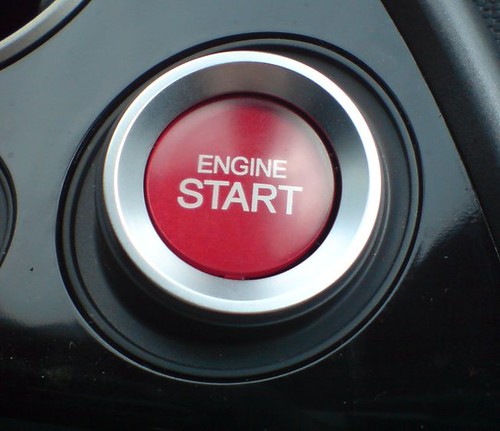My mom kept all my report cards. I've got them in a box, along with various diplomas, special projects, letters of recognition, and certificates. My unofficial college transcripts are in there too, along with a copy of my GRE test scores. I don't know what happened to my SAT scores. That document from the College Board is lost somewhere, along with lots of other pieces of my academic record -- for better or worse. Lost. Scattered across other boxes. Sitting in file cabinets in the basement of some school building. Gone.
There are digital records now too, of course. I could write to the Department of Education, I suppose, about seeing my FAFSA records and an accounting of what exactly I still owe them in student loan repayments. I could write to the University of Oregon, Johns Hopkins, St. Clares -- all the schools I've ever attended -- and I imagine they could pull up my file. But in all cases, my request would come back in an envelope -- a piece of paper with an official seal.
And what of the unofficial records? What about the informal classes I've taken? (10 years of piano class, for starters.) What about my library records? My reading lists? My high scores in Scrabble? My Codecademy badges?
How can I collect all my educational data into one place, one digital box -- my own personal data locker?
The answer: I can't. Not yet at least. But the Department of Education's proposed "MyData" button could be a start.
A "Blue Button" for Education
The MyData button is a follow-up to the Blue Button, the VA initiative that allows veterans to access and download their personal health record. That download, which comes in a simple text file or a PDF, includes information like demographic information, emergency contact information, medical history, allergies, immunizations, vitals, health care provider, and health insurance information; when linked to a military record, it can also include service dates, deployment periods and Military Occupational Specialty (MOS) codes.
As the data downloaded via the Blue Button is both human- and machine-readable, the information can be shared with people -- a doctor, for example -- or with other third-party applications. There are several companies working on building the latter, integrating that information into other systems. (Examples include Fidelis, an education startup that helps veterans make the transition to university life.)
The MyData button works on a very similar premise: making all your education data available to download in a machine readable format so that you can store it and share it, should you choose to do so, with other people and organizations.
But as my own collection of personal academic records indicates, there's an added challenge here when it comes to educational data. Unlike veterans' data, which is centralized under the VA and Department of Defense, educational data is scattered across the federal, state, and local level. (The Department of Education only handles financial aid data; it doesn't control our transcript or test data, for example).
The Challenges of Data Silos, Data Standards
In fact, most of our educational info, even when it's associated with public education, resides in the databases of third party vendors. These are the companies that provide schools with Student Information Systems, learning management systems, learning software, digital textbooks, and the like. As it currently stands, all this data lives in separate silos, often inaccessible by other services or by students themselves.
That means that, moving forward with the plans for a MyData button, the Department of Education is going to have to steer many of the companies that house this data into a conversation about standards and accessibility. How will official data move between these systems and the individual student and her/his parents? And how can we open up this data so that it can move between systems too? The latter will be a particular boon to education startups, which often have to compete with older, more established education companies that have amassed a wealth of student data that they make incredibly difficult to access.
Several key industry players are on board with the MyData button initiative, including ETS, Pearson, Parchment, and Houghton Mifflin Harcourt. Microsoft has also said it's building a cloud-based platform for a "Lifelong Learning Record."
It's an important initiative, one that will hopefully dovetail with other efforts to help people understand the importance of controlling and storing their own personal data -- things like the Locker Project and Think Up.
There's no official word on when the MyData button will be ready to "push," but hopefully the first datasets will be available to download by the start of the new school year.
Photo credits: Stephen Hanafin
